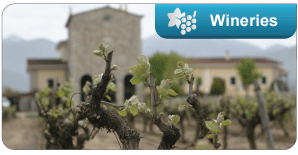Natural attractions
Τhe country’s geographical fragmentation, infinitely varied terrain and temperate climate have richly endowed it in terms of scenery, ecosystems, flora and natural attractions generally.
Given the dominance of the “sun, sea and sand” theme, some of the most popular natural attractions are the endless beaches, like those of Rhodes, Corfu, Halkidiki, Crete and -more recently- Messinia. But there is probably no such thing as a typical Greek resort, so others, of the more cosmopolitan variety, have relied more on the scenery of their landscape, like Santorini, Myconos, Skopelos and Cephalonia; the allure of Zakynthos and Alonnisos strongly relies on their national parks for marine life.
The diversity of natural attractions is also true of mainland provinces, which offer some of the best and least exploited opportunities for alternative and winter sports in Europe, particularly along the breathtaking mountains of the Pindos range. Landscapes vary from the rainy and lush forests of Pilio to the stony deserts of Mani, and from the stunning lake districts of Prespes and Kerkini of Macedonia to the awesome Vikos gorge in Epirus. Besides their natural attractions, areas like Pilio and western Macedonia are also noted for their vernacular architecture.
Crete, the largest island, combines the wild beauty of its mountains and gorges with some of the most breathtaking beaches in the country. A couple of islands, like Leros and Kea, offer opportunities in diving for wartime and other shipwrecks; Greece also has several dozen of spa resorts -Aedipsos has in fact attracted the powerful and the celebrities since antiquity. For more details on Greek natural attractions and resorts, log on to www.visitgreece.gr.



